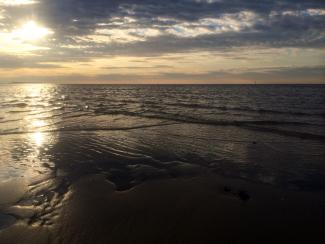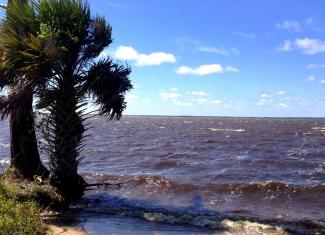NRDA Early Restoration Breakdown
Last updated June 2, 2015

On May 20, 2015, the Deepwater Horizon trustees released a draft plan for a fourth phase of early restoration, which proposed 10 projects costing around $134 million. With this recent announcement, now is a good time to review where the money has been spent so far and how the fourth round fits into the broader early restoration picture. First, we need to review some background.
Background
As a refresher, a Natural Resource Damage Assessment (NRDA) is a process focused on restoring natural resources injured by an oil spill. In a typical NRDA, the trustees assess injuries to natural resources and then come up with a restoration plan to address those injuries. Restoration projects begin once the assessment is complete. Here, however, BP agreed to provide up to $1 billion so that certain restoration projects could be started before the assessment is finished.

Three phases of projects worth about $700 million have been finalized so far (and, if the fourth round of projects is approved, the total will reach approximately $832 million of the $1 billion). The first phase included eight projects (worth approximately $62 million), the second phase included two projects (worth approximately $9 million), and the third phase included 44 projects (worth approximately $627 million). So, how has this money been spent?
One way to think about this question is through the concept of offsets. “NRDA Offsets” are credits that BP receives for early restoration projects, and will be subtracted from BP’s total liability for natural resource damages when the NRDA is complete. These credits are not just calculated in terms of dollars (though that’s one way to calculate them); in fact, offsets have been calculated in three different ways so far: habitat equivalency analysis (projects are valued in terms of habitat units like dunes); resource equivalency analysis (projects are valued in terms of resource units like birds); and monetary valuation (projects are valued in terms of dollars).
Phases I through III
The interactive graph below shows the total spending in each state for the first three phases of early restoration according to offset type. We allocated the costs of a project to the offset type it received, using three broad categories: (1) habitat offsets; (2) resource offsets; and (3) monetary offsets (used for recreational use projects). So, for example, if a Florida project cost $5 million and it received habitat offsets (like marsh habitat offsets), $5 million would be credited to the habitat offset category for Florida. Hover over the icons to learn more about spending in each state.
The graph shows an interesting picture of how early restoration funds have been spent for the first three phases. In Louisiana, the majority of funds have gone to projects receiving habitat and resource offsets (note that the majority of Louisiana’s total is from one project – the Outer Coast project – which cost approximately $318 million and received both types of offsets). Mississippi’s spending is fairly balanced between offset types, while the other three states (Alabama, Florida, and Texas) have used the majority of funds in Phases I through III for projects receiving monetary offsets (i.e. recreational use projects). Across the Gulf, 33.7% of funds went to projects receiving monetary offsets (i.e. recreational use projects). In Alabama, Florida, and Texas, however, over 75% of funds went to such projects.
Proposed Phase IV
The picture is somewhat different for the projects proposed for the fourth phase (below). The figure on the left shows spending by offset type for each state for the fourth phase. The figure on the right shows aggregate spending by offset type across the Gulf.
For the proposed fourth phase, less than 10% of project funding is allocated to projects receiving monetary offsets (i.e. recreational use projects). Instead, more than two-thirds of project funding is slated to go to projects receiving resource offsets. This includes the Sea Turtle Early Restoration project and the Pelagic Longline Bycatch Reduction Project–the first early restoration projects that are to be implemented Gulf-wide.
Opportunity for Participation
It is important to note that the fourth phase of early restoration projects has not been finalized yet, which means that changes can still be made. The public has until June 19, 2015 to comment (click here for our guide to public participation), and a number of public meetings will be held across the Gulf from June 2 through 11. Click here for additional details about when and where those meetings will take place.
The public has an essential role to play in the future of the Gulf, through the NRDA early restoration process and beyond. By understanding how money is being spent now, it may be possible to positively influence how the billions of dollars that are expected to be available for Gulf restoration will be spent in the future.
*Notes on Methodology*
We used information compiled in our Restoration Projects Database, allocating the costs of a project to the type of offset it received (we used three broad offset types: habitat, resource, and monetary offsets).
Where projects received more than one type of offset, the total cost was split evenly between the offset types. For example, the Pensacola Bay Living Shoreline project cost $10,828,063, receiving 86.63 DSAYs of salt marsh habitat offsets and 28,813 DKg-Ys of benthic secondary productivity offsets. Thus, the habitat and resource offset categories were each credited $5,414,032.
Similarly, when a project took place in two or more states, the project costs were divided in the same proportion as the offsets. For example, the total project costs for the “Comprehensive Program for Enhanced Management of Avian Breeding Habitat Injured by Response in the Florida Panhandle, Alabama, and Mississippi” was $4,658,118, with BP receiving offsets of 1678 DSAYs of nesting habitat for beach nesting birds. These offsets were split among three states in the following proportions: Florida (80.6%), Alabama (3.2%), and Mississippi (16.2%). We therefore allocated the project costs of $4,658,118 among the three states in the same proportion as the offsets, with Florida credited $3,753,144, Alabama $149,904, and Mississippi $755,070.
Finally, for the two projects in the proposed fourth phase that will be implemented throughout the Gulf of Mexico, the funds were allocated to a “Gulf-wide” category.